:max_bytes(150000):strip_icc():format(webp)/kids-ipad-580f65635f9b58564cc0fc91-5c5cbb6ac9e77c0001d92aa4.jpg)
How to Create After Effects Gifs

How to Create After Effects Gifs
How to Create After Effects Gifs
An easy yet powerful editor
Numerous effects to choose from
Detailed tutorials provided by the official channel
GIFs have been around for quite some time but as the flow of content continues to plummet on popular social media platforms like Facebook or Instagram, the demand for GIFs would continue to increase.
Unfortunately, you won’t be able to make a gif in after effects directly, unless with the help of a plug-in like GIFGun.
Before moving forward, keep in mind that using Adobe Media Encoder is an easier method for compressing your exports rather than any third-party compressor.
In this article, you will find easy to follow methods using which you can create after effects GIFs within a matter of minutes.
In this article
01 [General Knowledge on GIF Animation](#Part 1)
02 [What Is the Difference Between After Effects Gifs’ Making and Photoshop Gifs’ Making?](#Part 2)
03 [How to Create After Effects Gifs](#Part 3)
Part 1 General Knowledge on GIF Animation
01What is a GIF?
The acronym GIF stands for Graphics Interchange Format and the file is created in bitmap image format. This was developed back in 1987 by a working in CompuServe.
This format was incredibly successful on the WEB due to benefits like smaller file sizes, broader support, and its easy compatibility with Operating Systems.
However, GIFs are much more suitable as simple graphics and logos rather than Live Action Videos with its palette limitation of 256 per image.
Creating a GIF is like looping an animation or animated elements. You can use these animated GIFs in banners to engage your audience or even create fun sharable content for your Facebook pages.
You can start by creating basic easy animations in Photoshop and then elevate them by using After Effects.
02Why create a GIF?
Here are a handful of things you can keep your eye on if you are just starting on making GIFs;
● Simple Product Demonstrations. With simple 3 to 4 step GIFs, you can briefly introduce steps on how to use a product.
● You can provide instructions in a short span of time.
● UX designers use GIFs to show the functioning of certain digital experiences.
● You can introduce GIFs on your page to keep followers engaged.
● You can display some amazing things on your website.
Part 2 Difference between making GIFs in After Effects and Photoshop
Creating GIFs in After Effects and Photoshop are both one in the same thing but the results may vary depending on which choice of tools and features suits you better.
Now, for those who are learning Photoshop and After Effects for the first time, to understand the difference in results between both these software lets familiarize you with their features in brief.
01What’s Similar?
Since both are designed by Adobe, there are bound to be similarities in the tools and interface they use. Both these software enables you to use layers of editing from the layer panel where you separate the blending or transform multiple layers. You can apply masks to these layers in different ways on both software.
02Groups (PS) and Nested (AE) Composition
In Photoshop, you can group layers together and apply styles, blends, and transformations together. However, in After Effects, this is called Nesting.
Both are in a way similar to each other but Nesting Comps give users more functionality as it interprets probable compositions during the nesting process.
Smart objects used in PS are also comparable to Nested Comps as you can apply filters over one while applying effects to the other.
03Vector and Shapes
You can use the Pen tool or Shape tool in both PS and AE that creates shape layers without losing any integrity. Both the applications support Bezier which lets you control curves between anchor points in PS and vertices in AE.
04Destructive Effects
After Effects does not provide you with destructive effects while in Photoshop you can apply non-destructive filters. You can also combine several layers to apply changes or distort your images but these permanent changes cannot be made in After Effects.
You will also notice that although there are several similarities, there are tools and features which are not shared between both applications. The types of tool categories would also vary. Like with After Effects, you can create paragraph and character styles that you can apply to texts.
Part 3 How to Create After Effects Gifs
After Effects harbors greater video editing capabilities rather than the basic animating options you can try on Photoshop. In creating a GIF, you would want to leverage the combination of tools offered on both After Effects and Photoshop.
Let’s first get into how you can create an animated video on After Effects and then convert it into an animated GIF in Photoshop.
01Animating in After Effects
Step 1: Open After Effects, go to ‘Composition’ and create ‘New Composition’. You will need to fill out the dimensions and specs for your project on the window that pops up. For example, 300x250 px at 30 fps and 6 sec duration.
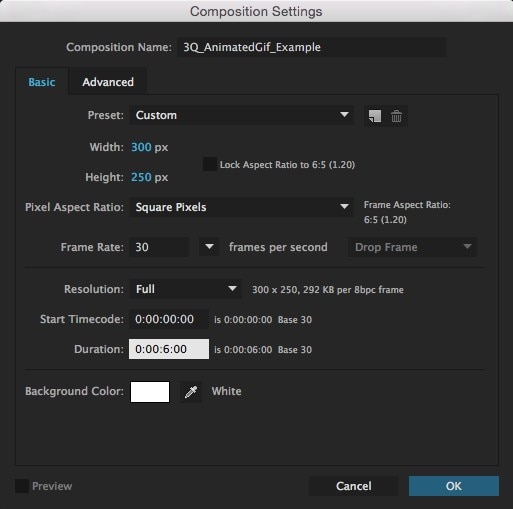
Step 2: You can import assets by dragging and dropping, or by going to the ‘Project Panel’ in the After Effects Workspace as shown in the image.
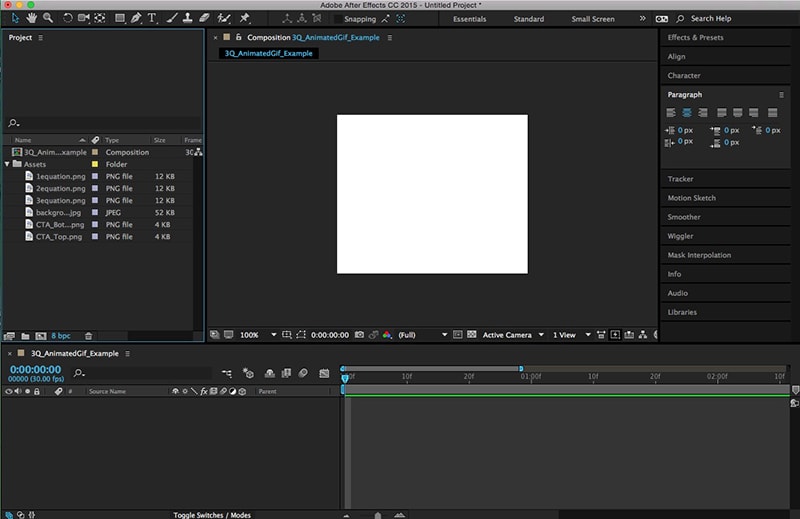
Step 3: Now, you can begin animating your Assets. Drag them and add them to the ‘Composition’ panel or ‘Timeline’ panel. Placing them in either one will make them appear on both. Adjust the layers according to the topmost layer on the panel.
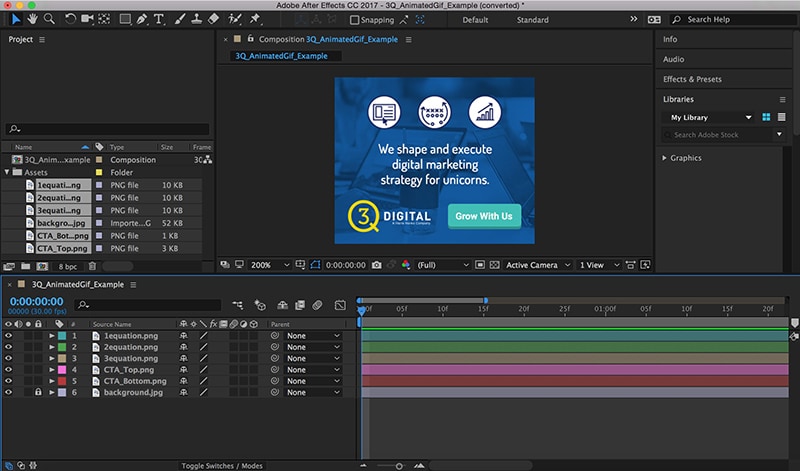
Dial down the scale of every animation to 0% so that can be animated in a growing sequence. Select the layer you wish to adjust and click on ‘Transform’. Click on ‘Scale’ to give that layer an active marker on the timeline. Set the scale to 0%.
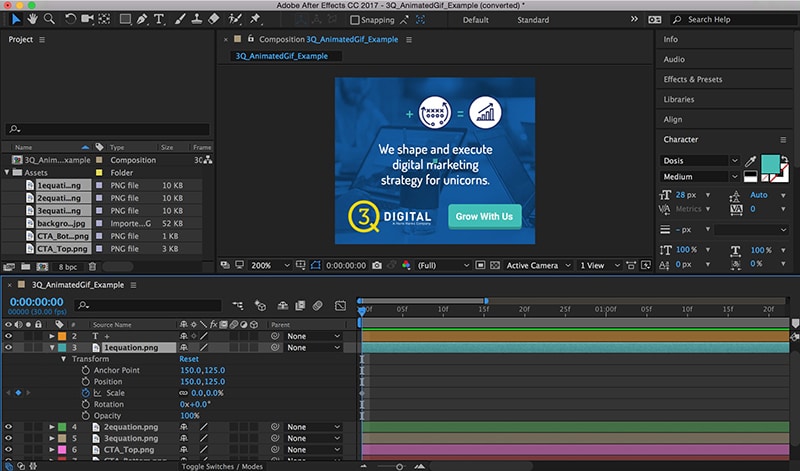
You can now begin animating the first item by moving the current time indicator to 06f (the 6th frame on the 30fps timeline). Scale the item back to 100% and the marker will reappear.
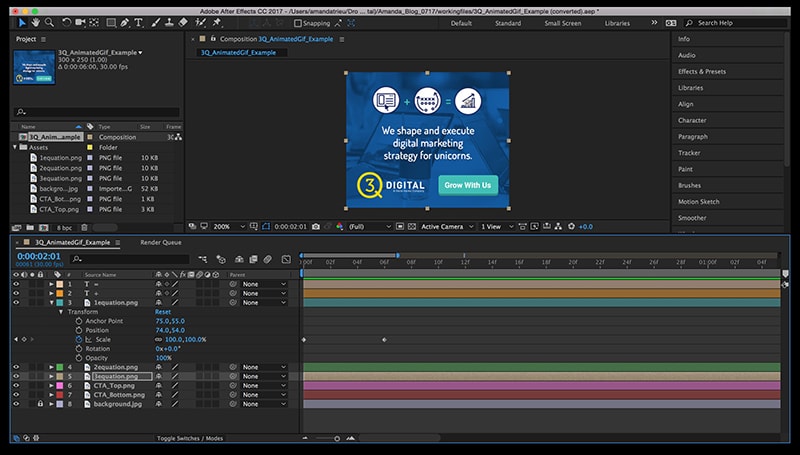
Repeat this for the other items. Keep in mind that each item has a 06f space between them for later adjustability.

Your equation is now complete and all that is left to do is animate your CTA button. Adjust the position of the top layer on your CTA and set the current time indicator to start time on the button animation. Click on ‘position’ to set up a marker on your Timeline. Forward the 04f then nudge the button and reverse back to the original position so that it looks like a button clicking animation.
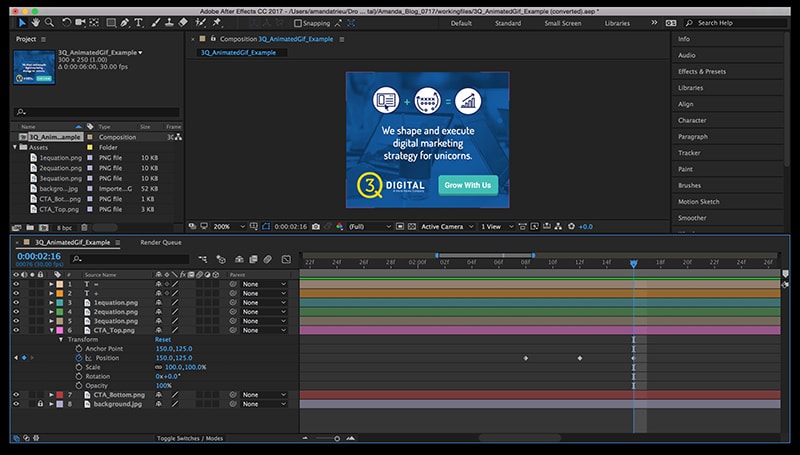
Your animation is now complete. Now go to ‘Composition’ and shorten the time in the ‘Duration’ panel.
Step 4: Go to Composition. Click on Pre-Render and a new selection will pop up. Now click on ‘Render’. Your output will be a .mov file.
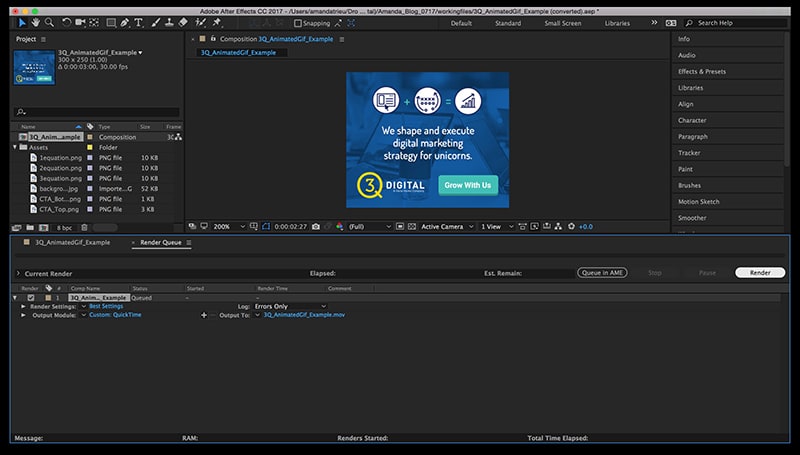
If you find exporting gifs from After Effects too complicated, you can also upload and loop videos using Wondershare Filmora Video Editor which has plenty of other amazing video editing features you can drag and drop to create.

Wondershare Filmora - Best Video Editor for Mac/Windows
5,481,435 people have downloaded it.
Build unique custom animations without breaking a sweat.
Focus on creating epic stories and leave the details to Filmora’s auto features.
Start a creative adventure with drag & drop effects and endless possibilities.
Filmora simplifies advanced features to save you time and effort.
Filmora cuts out repetition so you can move on to your next creative breakthrough.
02Converting Animation to GIF in Photoshop
Step 1: Create a new file in Photoshop with the same specs as you did in After Effects. Now go to ‘File’ > ‘Import’ > ‘Frames to Layers’ and import the saved .mov file.
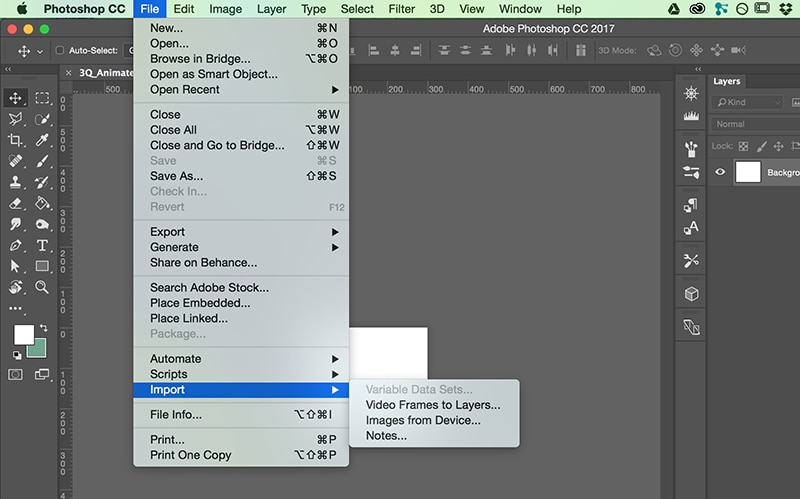
Step 2: If you don’t automatically see the timeline, go to Windows > Timeline.

Step 3: Decide on how many loops you want in your animation. Once you are done with your GIF, go to ‘File’ > Export. Apply the Legacy Save for Web and choose the format for your GIF.
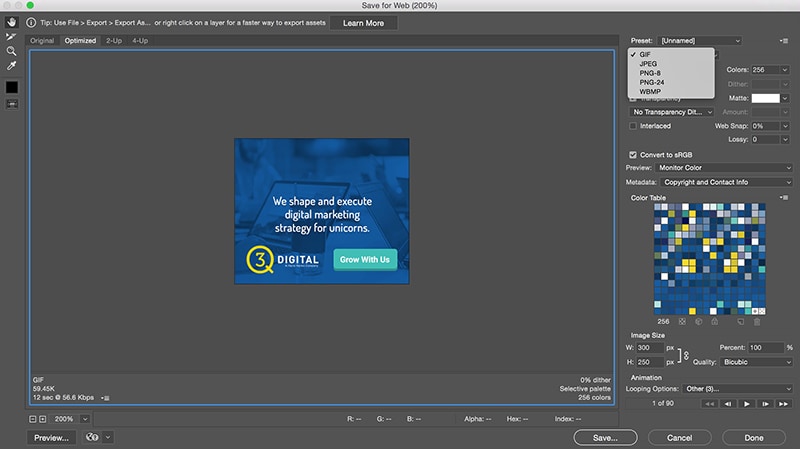
Step 4: In Export options, you can gain access to several presets to apply to your animated GIFs. The more color displayed in your GIF, the larger its size. You can use Dethering to smoothen gradients and shades. Looping is also turned off on Photoshop but you can apply looping from the ‘Options’ shown at the bottom of the menu.
Part 1 Ending Thoughts
● GIFs are a popular type of media that is quite trendy and easy to make using Adobe after effects gifs or Photoshop. They are called Graphics Interchange Format and are best used as simple graphic images.
● You require a combination of both Photoshop and After Effects, though both share similar interfaces, tools, and effects. You can group or nest compositions, apply filters or effects, and adjust vectors and shapes.
● After Effects is better than Photoshop in terms of creating videos, so you can first create a project in AE and then import the project onto PS after exporting after effects to gif. You can also use Filmora for the first step of this process.
GIFs have been around for quite some time but as the flow of content continues to plummet on popular social media platforms like Facebook or Instagram, the demand for GIFs would continue to increase.
Unfortunately, you won’t be able to make a gif in after effects directly, unless with the help of a plug-in like GIFGun.
Before moving forward, keep in mind that using Adobe Media Encoder is an easier method for compressing your exports rather than any third-party compressor.
In this article, you will find easy to follow methods using which you can create after effects GIFs within a matter of minutes.
In this article
01 [General Knowledge on GIF Animation](#Part 1)
02 [What Is the Difference Between After Effects Gifs’ Making and Photoshop Gifs’ Making?](#Part 2)
03 [How to Create After Effects Gifs](#Part 3)
Part 1 General Knowledge on GIF Animation
01What is a GIF?
The acronym GIF stands for Graphics Interchange Format and the file is created in bitmap image format. This was developed back in 1987 by a working in CompuServe.
This format was incredibly successful on the WEB due to benefits like smaller file sizes, broader support, and its easy compatibility with Operating Systems.
However, GIFs are much more suitable as simple graphics and logos rather than Live Action Videos with its palette limitation of 256 per image.
Creating a GIF is like looping an animation or animated elements. You can use these animated GIFs in banners to engage your audience or even create fun sharable content for your Facebook pages.
You can start by creating basic easy animations in Photoshop and then elevate them by using After Effects.
02Why create a GIF?
Here are a handful of things you can keep your eye on if you are just starting on making GIFs;
● Simple Product Demonstrations. With simple 3 to 4 step GIFs, you can briefly introduce steps on how to use a product.
● You can provide instructions in a short span of time.
● UX designers use GIFs to show the functioning of certain digital experiences.
● You can introduce GIFs on your page to keep followers engaged.
● You can display some amazing things on your website.
Part 2 Difference between making GIFs in After Effects and Photoshop
Creating GIFs in After Effects and Photoshop are both one in the same thing but the results may vary depending on which choice of tools and features suits you better.
Now, for those who are learning Photoshop and After Effects for the first time, to understand the difference in results between both these software lets familiarize you with their features in brief.
01What’s Similar?
Since both are designed by Adobe, there are bound to be similarities in the tools and interface they use. Both these software enables you to use layers of editing from the layer panel where you separate the blending or transform multiple layers. You can apply masks to these layers in different ways on both software.
02Groups (PS) and Nested (AE) Composition
In Photoshop, you can group layers together and apply styles, blends, and transformations together. However, in After Effects, this is called Nesting.
Both are in a way similar to each other but Nesting Comps give users more functionality as it interprets probable compositions during the nesting process.
Smart objects used in PS are also comparable to Nested Comps as you can apply filters over one while applying effects to the other.
03Vector and Shapes
You can use the Pen tool or Shape tool in both PS and AE that creates shape layers without losing any integrity. Both the applications support Bezier which lets you control curves between anchor points in PS and vertices in AE.
04Destructive Effects
After Effects does not provide you with destructive effects while in Photoshop you can apply non-destructive filters. You can also combine several layers to apply changes or distort your images but these permanent changes cannot be made in After Effects.
You will also notice that although there are several similarities, there are tools and features which are not shared between both applications. The types of tool categories would also vary. Like with After Effects, you can create paragraph and character styles that you can apply to texts.
Part 3 How to Create After Effects Gifs
After Effects harbors greater video editing capabilities rather than the basic animating options you can try on Photoshop. In creating a GIF, you would want to leverage the combination of tools offered on both After Effects and Photoshop.
Let’s first get into how you can create an animated video on After Effects and then convert it into an animated GIF in Photoshop.
01Animating in After Effects
Step 1: Open After Effects, go to ‘Composition’ and create ‘New Composition’. You will need to fill out the dimensions and specs for your project on the window that pops up. For example, 300x250 px at 30 fps and 6 sec duration.

Step 2: You can import assets by dragging and dropping, or by going to the ‘Project Panel’ in the After Effects Workspace as shown in the image.

Step 3: Now, you can begin animating your Assets. Drag them and add them to the ‘Composition’ panel or ‘Timeline’ panel. Placing them in either one will make them appear on both. Adjust the layers according to the topmost layer on the panel.

Dial down the scale of every animation to 0% so that can be animated in a growing sequence. Select the layer you wish to adjust and click on ‘Transform’. Click on ‘Scale’ to give that layer an active marker on the timeline. Set the scale to 0%.

You can now begin animating the first item by moving the current time indicator to 06f (the 6th frame on the 30fps timeline). Scale the item back to 100% and the marker will reappear.

Repeat this for the other items. Keep in mind that each item has a 06f space between them for later adjustability.

Your equation is now complete and all that is left to do is animate your CTA button. Adjust the position of the top layer on your CTA and set the current time indicator to start time on the button animation. Click on ‘position’ to set up a marker on your Timeline. Forward the 04f then nudge the button and reverse back to the original position so that it looks like a button clicking animation.

Your animation is now complete. Now go to ‘Composition’ and shorten the time in the ‘Duration’ panel.
Step 4: Go to Composition. Click on Pre-Render and a new selection will pop up. Now click on ‘Render’. Your output will be a .mov file.

If you find exporting gifs from After Effects too complicated, you can also upload and loop videos using Wondershare Filmora Video Editor which has plenty of other amazing video editing features you can drag and drop to create.

Wondershare Filmora - Best Video Editor for Mac/Windows
5,481,435 people have downloaded it.
Build unique custom animations without breaking a sweat.
Focus on creating epic stories and leave the details to Filmora’s auto features.
Start a creative adventure with drag & drop effects and endless possibilities.
Filmora simplifies advanced features to save you time and effort.
Filmora cuts out repetition so you can move on to your next creative breakthrough.
02Converting Animation to GIF in Photoshop
Step 1: Create a new file in Photoshop with the same specs as you did in After Effects. Now go to ‘File’ > ‘Import’ > ‘Frames to Layers’ and import the saved .mov file.

Step 2: If you don’t automatically see the timeline, go to Windows > Timeline.

Step 3: Decide on how many loops you want in your animation. Once you are done with your GIF, go to ‘File’ > Export. Apply the Legacy Save for Web and choose the format for your GIF.

Step 4: In Export options, you can gain access to several presets to apply to your animated GIFs. The more color displayed in your GIF, the larger its size. You can use Dethering to smoothen gradients and shades. Looping is also turned off on Photoshop but you can apply looping from the ‘Options’ shown at the bottom of the menu.
Part 1 Ending Thoughts
● GIFs are a popular type of media that is quite trendy and easy to make using Adobe after effects gifs or Photoshop. They are called Graphics Interchange Format and are best used as simple graphic images.
● You require a combination of both Photoshop and After Effects, though both share similar interfaces, tools, and effects. You can group or nest compositions, apply filters or effects, and adjust vectors and shapes.
● After Effects is better than Photoshop in terms of creating videos, so you can first create a project in AE and then import the project onto PS after exporting after effects to gif. You can also use Filmora for the first step of this process.
GIFs have been around for quite some time but as the flow of content continues to plummet on popular social media platforms like Facebook or Instagram, the demand for GIFs would continue to increase.
Unfortunately, you won’t be able to make a gif in after effects directly, unless with the help of a plug-in like GIFGun.
Before moving forward, keep in mind that using Adobe Media Encoder is an easier method for compressing your exports rather than any third-party compressor.
In this article, you will find easy to follow methods using which you can create after effects GIFs within a matter of minutes.
In this article
01 [General Knowledge on GIF Animation](#Part 1)
02 [What Is the Difference Between After Effects Gifs’ Making and Photoshop Gifs’ Making?](#Part 2)
03 [How to Create After Effects Gifs](#Part 3)
Part 1 General Knowledge on GIF Animation
01What is a GIF?
The acronym GIF stands for Graphics Interchange Format and the file is created in bitmap image format. This was developed back in 1987 by a working in CompuServe.
This format was incredibly successful on the WEB due to benefits like smaller file sizes, broader support, and its easy compatibility with Operating Systems.
However, GIFs are much more suitable as simple graphics and logos rather than Live Action Videos with its palette limitation of 256 per image.
Creating a GIF is like looping an animation or animated elements. You can use these animated GIFs in banners to engage your audience or even create fun sharable content for your Facebook pages.
You can start by creating basic easy animations in Photoshop and then elevate them by using After Effects.
02Why create a GIF?
Here are a handful of things you can keep your eye on if you are just starting on making GIFs;
● Simple Product Demonstrations. With simple 3 to 4 step GIFs, you can briefly introduce steps on how to use a product.
● You can provide instructions in a short span of time.
● UX designers use GIFs to show the functioning of certain digital experiences.
● You can introduce GIFs on your page to keep followers engaged.
● You can display some amazing things on your website.
Part 2 Difference between making GIFs in After Effects and Photoshop
Creating GIFs in After Effects and Photoshop are both one in the same thing but the results may vary depending on which choice of tools and features suits you better.
Now, for those who are learning Photoshop and After Effects for the first time, to understand the difference in results between both these software lets familiarize you with their features in brief.
01What’s Similar?
Since both are designed by Adobe, there are bound to be similarities in the tools and interface they use. Both these software enables you to use layers of editing from the layer panel where you separate the blending or transform multiple layers. You can apply masks to these layers in different ways on both software.
02Groups (PS) and Nested (AE) Composition
In Photoshop, you can group layers together and apply styles, blends, and transformations together. However, in After Effects, this is called Nesting.
Both are in a way similar to each other but Nesting Comps give users more functionality as it interprets probable compositions during the nesting process.
Smart objects used in PS are also comparable to Nested Comps as you can apply filters over one while applying effects to the other.
03Vector and Shapes
You can use the Pen tool or Shape tool in both PS and AE that creates shape layers without losing any integrity. Both the applications support Bezier which lets you control curves between anchor points in PS and vertices in AE.
04Destructive Effects
After Effects does not provide you with destructive effects while in Photoshop you can apply non-destructive filters. You can also combine several layers to apply changes or distort your images but these permanent changes cannot be made in After Effects.
You will also notice that although there are several similarities, there are tools and features which are not shared between both applications. The types of tool categories would also vary. Like with After Effects, you can create paragraph and character styles that you can apply to texts.
Part 3 How to Create After Effects Gifs
After Effects harbors greater video editing capabilities rather than the basic animating options you can try on Photoshop. In creating a GIF, you would want to leverage the combination of tools offered on both After Effects and Photoshop.
Let’s first get into how you can create an animated video on After Effects and then convert it into an animated GIF in Photoshop.
01Animating in After Effects
Step 1: Open After Effects, go to ‘Composition’ and create ‘New Composition’. You will need to fill out the dimensions and specs for your project on the window that pops up. For example, 300x250 px at 30 fps and 6 sec duration.

Step 2: You can import assets by dragging and dropping, or by going to the ‘Project Panel’ in the After Effects Workspace as shown in the image.

Step 3: Now, you can begin animating your Assets. Drag them and add them to the ‘Composition’ panel or ‘Timeline’ panel. Placing them in either one will make them appear on both. Adjust the layers according to the topmost layer on the panel.

Dial down the scale of every animation to 0% so that can be animated in a growing sequence. Select the layer you wish to adjust and click on ‘Transform’. Click on ‘Scale’ to give that layer an active marker on the timeline. Set the scale to 0%.

You can now begin animating the first item by moving the current time indicator to 06f (the 6th frame on the 30fps timeline). Scale the item back to 100% and the marker will reappear.

Repeat this for the other items. Keep in mind that each item has a 06f space between them for later adjustability.

Your equation is now complete and all that is left to do is animate your CTA button. Adjust the position of the top layer on your CTA and set the current time indicator to start time on the button animation. Click on ‘position’ to set up a marker on your Timeline. Forward the 04f then nudge the button and reverse back to the original position so that it looks like a button clicking animation.

Your animation is now complete. Now go to ‘Composition’ and shorten the time in the ‘Duration’ panel.
Step 4: Go to Composition. Click on Pre-Render and a new selection will pop up. Now click on ‘Render’. Your output will be a .mov file.

If you find exporting gifs from After Effects too complicated, you can also upload and loop videos using Wondershare Filmora Video Editor which has plenty of other amazing video editing features you can drag and drop to create.

Wondershare Filmora - Best Video Editor for Mac/Windows
5,481,435 people have downloaded it.
Build unique custom animations without breaking a sweat.
Focus on creating epic stories and leave the details to Filmora’s auto features.
Start a creative adventure with drag & drop effects and endless possibilities.
Filmora simplifies advanced features to save you time and effort.
Filmora cuts out repetition so you can move on to your next creative breakthrough.
02Converting Animation to GIF in Photoshop
Step 1: Create a new file in Photoshop with the same specs as you did in After Effects. Now go to ‘File’ > ‘Import’ > ‘Frames to Layers’ and import the saved .mov file.

Step 2: If you don’t automatically see the timeline, go to Windows > Timeline.

Step 3: Decide on how many loops you want in your animation. Once you are done with your GIF, go to ‘File’ > Export. Apply the Legacy Save for Web and choose the format for your GIF.

Step 4: In Export options, you can gain access to several presets to apply to your animated GIFs. The more color displayed in your GIF, the larger its size. You can use Dethering to smoothen gradients and shades. Looping is also turned off on Photoshop but you can apply looping from the ‘Options’ shown at the bottom of the menu.
Part 1 Ending Thoughts
● GIFs are a popular type of media that is quite trendy and easy to make using Adobe after effects gifs or Photoshop. They are called Graphics Interchange Format and are best used as simple graphic images.
● You require a combination of both Photoshop and After Effects, though both share similar interfaces, tools, and effects. You can group or nest compositions, apply filters or effects, and adjust vectors and shapes.
● After Effects is better than Photoshop in terms of creating videos, so you can first create a project in AE and then import the project onto PS after exporting after effects to gif. You can also use Filmora for the first step of this process.
GIFs have been around for quite some time but as the flow of content continues to plummet on popular social media platforms like Facebook or Instagram, the demand for GIFs would continue to increase.
Unfortunately, you won’t be able to make a gif in after effects directly, unless with the help of a plug-in like GIFGun.
Before moving forward, keep in mind that using Adobe Media Encoder is an easier method for compressing your exports rather than any third-party compressor.
In this article, you will find easy to follow methods using which you can create after effects GIFs within a matter of minutes.
In this article
01 [General Knowledge on GIF Animation](#Part 1)
02 [What Is the Difference Between After Effects Gifs’ Making and Photoshop Gifs’ Making?](#Part 2)
03 [How to Create After Effects Gifs](#Part 3)
Part 1 General Knowledge on GIF Animation
01What is a GIF?
The acronym GIF stands for Graphics Interchange Format and the file is created in bitmap image format. This was developed back in 1987 by a working in CompuServe.
This format was incredibly successful on the WEB due to benefits like smaller file sizes, broader support, and its easy compatibility with Operating Systems.
However, GIFs are much more suitable as simple graphics and logos rather than Live Action Videos with its palette limitation of 256 per image.
Creating a GIF is like looping an animation or animated elements. You can use these animated GIFs in banners to engage your audience or even create fun sharable content for your Facebook pages.
You can start by creating basic easy animations in Photoshop and then elevate them by using After Effects.
02Why create a GIF?
Here are a handful of things you can keep your eye on if you are just starting on making GIFs;
● Simple Product Demonstrations. With simple 3 to 4 step GIFs, you can briefly introduce steps on how to use a product.
● You can provide instructions in a short span of time.
● UX designers use GIFs to show the functioning of certain digital experiences.
● You can introduce GIFs on your page to keep followers engaged.
● You can display some amazing things on your website.
Part 2 Difference between making GIFs in After Effects and Photoshop
Creating GIFs in After Effects and Photoshop are both one in the same thing but the results may vary depending on which choice of tools and features suits you better.
Now, for those who are learning Photoshop and After Effects for the first time, to understand the difference in results between both these software lets familiarize you with their features in brief.
01What’s Similar?
Since both are designed by Adobe, there are bound to be similarities in the tools and interface they use. Both these software enables you to use layers of editing from the layer panel where you separate the blending or transform multiple layers. You can apply masks to these layers in different ways on both software.
02Groups (PS) and Nested (AE) Composition
In Photoshop, you can group layers together and apply styles, blends, and transformations together. However, in After Effects, this is called Nesting.
Both are in a way similar to each other but Nesting Comps give users more functionality as it interprets probable compositions during the nesting process.
Smart objects used in PS are also comparable to Nested Comps as you can apply filters over one while applying effects to the other.
03Vector and Shapes
You can use the Pen tool or Shape tool in both PS and AE that creates shape layers without losing any integrity. Both the applications support Bezier which lets you control curves between anchor points in PS and vertices in AE.
04Destructive Effects
After Effects does not provide you with destructive effects while in Photoshop you can apply non-destructive filters. You can also combine several layers to apply changes or distort your images but these permanent changes cannot be made in After Effects.
You will also notice that although there are several similarities, there are tools and features which are not shared between both applications. The types of tool categories would also vary. Like with After Effects, you can create paragraph and character styles that you can apply to texts.
Part 3 How to Create After Effects Gifs
After Effects harbors greater video editing capabilities rather than the basic animating options you can try on Photoshop. In creating a GIF, you would want to leverage the combination of tools offered on both After Effects and Photoshop.
Let’s first get into how you can create an animated video on After Effects and then convert it into an animated GIF in Photoshop.
01Animating in After Effects
Step 1: Open After Effects, go to ‘Composition’ and create ‘New Composition’. You will need to fill out the dimensions and specs for your project on the window that pops up. For example, 300x250 px at 30 fps and 6 sec duration.

Step 2: You can import assets by dragging and dropping, or by going to the ‘Project Panel’ in the After Effects Workspace as shown in the image.

Step 3: Now, you can begin animating your Assets. Drag them and add them to the ‘Composition’ panel or ‘Timeline’ panel. Placing them in either one will make them appear on both. Adjust the layers according to the topmost layer on the panel.

Dial down the scale of every animation to 0% so that can be animated in a growing sequence. Select the layer you wish to adjust and click on ‘Transform’. Click on ‘Scale’ to give that layer an active marker on the timeline. Set the scale to 0%.

You can now begin animating the first item by moving the current time indicator to 06f (the 6th frame on the 30fps timeline). Scale the item back to 100% and the marker will reappear.

Repeat this for the other items. Keep in mind that each item has a 06f space between them for later adjustability.

Your equation is now complete and all that is left to do is animate your CTA button. Adjust the position of the top layer on your CTA and set the current time indicator to start time on the button animation. Click on ‘position’ to set up a marker on your Timeline. Forward the 04f then nudge the button and reverse back to the original position so that it looks like a button clicking animation.

Your animation is now complete. Now go to ‘Composition’ and shorten the time in the ‘Duration’ panel.
Step 4: Go to Composition. Click on Pre-Render and a new selection will pop up. Now click on ‘Render’. Your output will be a .mov file.

If you find exporting gifs from After Effects too complicated, you can also upload and loop videos using Wondershare Filmora Video Editor which has plenty of other amazing video editing features you can drag and drop to create.

Wondershare Filmora - Best Video Editor for Mac/Windows
5,481,435 people have downloaded it.
Build unique custom animations without breaking a sweat.
Focus on creating epic stories and leave the details to Filmora’s auto features.
Start a creative adventure with drag & drop effects and endless possibilities.
Filmora simplifies advanced features to save you time and effort.
Filmora cuts out repetition so you can move on to your next creative breakthrough.
02Converting Animation to GIF in Photoshop
Step 1: Create a new file in Photoshop with the same specs as you did in After Effects. Now go to ‘File’ > ‘Import’ > ‘Frames to Layers’ and import the saved .mov file.

Step 2: If you don’t automatically see the timeline, go to Windows > Timeline.

Step 3: Decide on how many loops you want in your animation. Once you are done with your GIF, go to ‘File’ > Export. Apply the Legacy Save for Web and choose the format for your GIF.

Step 4: In Export options, you can gain access to several presets to apply to your animated GIFs. The more color displayed in your GIF, the larger its size. You can use Dethering to smoothen gradients and shades. Looping is also turned off on Photoshop but you can apply looping from the ‘Options’ shown at the bottom of the menu.
Part 1 Ending Thoughts
● GIFs are a popular type of media that is quite trendy and easy to make using Adobe after effects gifs or Photoshop. They are called Graphics Interchange Format and are best used as simple graphic images.
● You require a combination of both Photoshop and After Effects, though both share similar interfaces, tools, and effects. You can group or nest compositions, apply filters or effects, and adjust vectors and shapes.
● After Effects is better than Photoshop in terms of creating videos, so you can first create a project in AE and then import the project onto PS after exporting after effects to gif. You can also use Filmora for the first step of this process.
How to Remove Audio From Videos with FFmpeg?
Unbelievably, the globe has been making headway in its endeavors. Considering how far the world has come in producing amazing things in recent times, it is impossible to fathom the progress made in the digital industry. There are now millions of video editing programs like FFmpeg that remove audio, each allowing you to accomplish anything. In addition to video editing, it is now possible to modify the music playing in the backdrop of a video. Doesn’t it seem impossible to you? However, it has an actual appearance and is simple to pull audio from a video. You will, however, need to choose a tool with great care and consideration.
In the following parts, we will discuss how to remove audio from video with FFmpeg successfully. In addition, we have also looked at other software that has the potential to be an alternative to FFmpeg that is far more effective.

Part 1: How to Use FFmpeg to Remove Audio from Videos?
FFMPEG is a highly flexible video editing program from the command line. You may use it for various purposes, including converting between different file formats. But in addition to that, you may use it to remove audio from your videos or clips. Here are two different ways to delete audio using FFMPEG, depending on what you want to do. But most crucially, speed and quality are not sacrificed with any of these choices. It’s about coding. When using other people’s code, also label the author. Using FFmpeg, you can separate the audio. The audio in video files may be removed, added, extracted, and added again with the help of this powerful utility.
You will only need to install FFmpeg on your computer after you have purchased it. Removing video is straightforward, so you won’t have to put in much effort to achieve this goal. Let’s look at the many methods available.
Use the Command Line
Step1 The command to extract audio from your video file is visible for your review.

Step2 It would be helpful if you updated the extension and the name of the file that was entered, but other than that, you won’t need to do anything else.

The preceding command is successful if the input file certifies. This is why you need to find the codec for the audio stream. If you obey this order, you will accomplish what you set out to do. A user might sometimes use an audio format returned by the previous command. However, this will only occasionally be successful.
The storage format that FFmpeg employs is determined by looking at the output file’s extension. It would help if you knew that a storage format, a container, and an audio format are distinct. You will encounter a scenario where the audio format does not have a container named after it. Two problematic formats are among the most common formats; they are PCM and Vorbis. OGG is compatible with Vorbis, whereas WAV is compatible with PCM.
Let’s investigate another approach to extract audio from a video using FFmpeg if the prior one was too difficult for you to grasp.
Use the Terminal
Step1 Verify that the format remains the same.
You will need to locate the video in its original format to be able to extract the audio from it. If you are unfamiliar with the primary format, you will be unable to determine the appropriate file extension. Because of this, you are going to need to make use of the ffprobe command.

Now, change “myvideo.mp4” to the name of the video file you want to use. This will verify that you are familiar with the video’s original file format.
After learning about the original audio’s format, you can reencode a video clip to remove the audio from it.
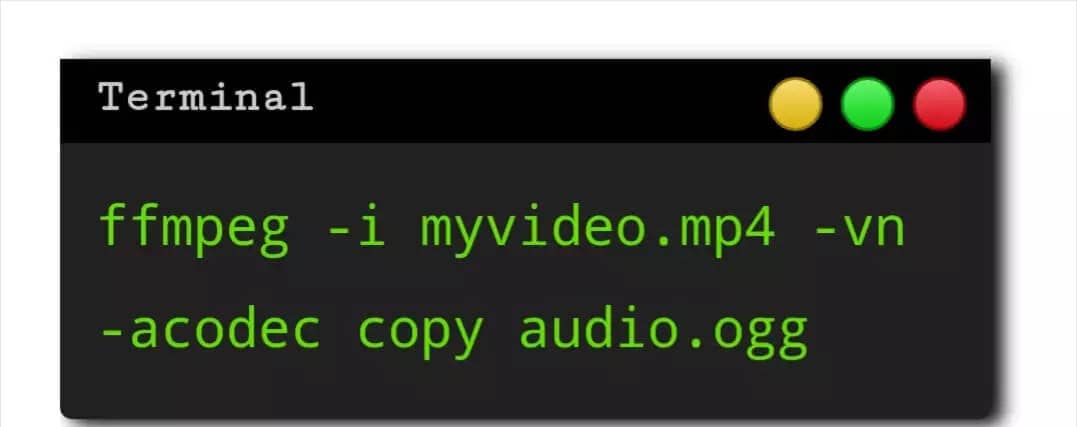
Step2 Modify the format, please.
You might try replacing myvideo.mp4 with the directory and filename to see if it helps. Additionally, it would be helpful if you updated the name of the audio.ogg file with the name you want to use.
Therefore, if you follow the two approaches discussed above, you can extract audio from your video files with little to no work. To completely comprehend the stages, you must examine them in great detail.
Part 2: The Most Straightforward Way to Mute Audio in Videos
If you seek an alternative method to FFmpeg removing audio, you can meet with an overwhelming number of possibilities, each claiming that it is superior to the others. However, in this instance, additional investigation is not required at all. Wondershare Filmora will turn out to be one of the better options. It is software designed for editing videos that will make it simple for you to work on any editing job. It is one of the choices held in the highest esteem among those offered in the industry nowadays.
Free Download For Win 7 or later(64-bit)
Free Download For macOS 10.14 or later
Some core audio editing features of Filmora are:
Audio Ducking: When VoiceOver is speaking, temporarily lower the loudness of the material played. Automatically Select the Caller as the Speaker: When you move your iPhone away from your ear during a call, the audio will automatically transfer over to the speaker system.
Silence Detection: Users of Filmora X have access to an add-on called Silence Detection, which is a paid add-on that helps users more quickly erase quiet pauses that occur throughout a film. To help you save time and make the editing process more comfortable, the add-on searches for the whole movie in search of any periods of silence automatically eliminates them all.
Auto Synchronization: When shooting with a camera or video camera and utilizing a microphone, this feature allows the user to easily replace the audio recorded with the audio in the movie. In addition, it can align the audio and video clips in the project automatically, eliminating the need for human alignment.
Speech to Text (STT): computational linguistics permits the recognition and translation of spoken language into written form. Other names for this technology are computer voice recognition and speech recognition.
Text to Speech (TTS): reads digital text aloud. This kind of technology is called “read-aloud” technology. TTS can take the text shown on a computer or any other digital device and turn it into sound by clicking a button or touching it with your finger.
Audio Visualizer: The Most Powerful Audio and Video Editor Available Today. With the help of Filmora Audio Visualizer, your music video may come to life. The effect will dynamically adapt the sound to the video while intelligently matching the sound.
Step1 Download, Install and Run the Filmora Video Editor.
After opening Filmora, the following user interface will appear: You may upload the video file from which you wish to delete the audio tracks by clicking the “Import” button.

Step2 Detach Audio from Uploaded Files
Remove the audio tracks from the original MP4 file by a drag and drop into the timeline, then right-clicking on the file and selecting “Detach Audio” from the menu that appears. After that, the split audio track will show in the Audio Timeline. To delete audio from an MP4, right-click the audio file and choose “Delete” from the menu that appears.
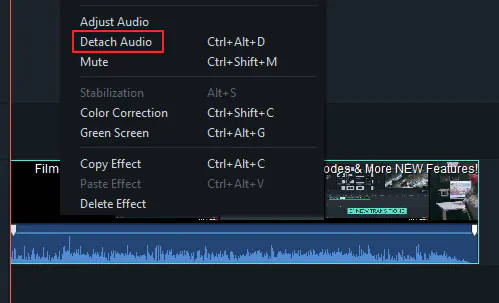
Step3 Export the Silenced Video
After that, pick the preferred export method by clicking the “Export” button. You can set the output video format to be the identical to the one used to record the video in the first place or select it as any other video format. After that, choose the video you want to export by clicking the “Export” option.
In addition, you can save the altered file to your iPhone, iPad, PSP, or other compatible device or instantly upload it to YouTube to share with your friends.
There you go! You successfully explored an excellent alternative software to remove audio from videos via FFmpeg.
Part 3: FAQs
1. How do I change audio in a video?
Changing audio in a video is easy if you use compatible high-end software like Filmora. This audio and video editing tool can modify or change the audio or soundtrack in a video. Much software of this kind is available for both Windows and Mac. Therefore, choose a reliable one, try it, and then begin using it.
2. How exactly does one go about switching the pre-installed audio track on a video?
When you’re viewing a video, you can get the impression that the music playing in the background doesn’t go very well with the content, and you might want to switch it. There are a variety of programs available that will assist you in replacing the audio with video. And now, I’m going to offer Filmora Video Editor as the ideal option since it is the program that is both the simplest and the quickest to do that task.
Conclusion
So, after reading this, you should be able to remove audio from video FFmpeg. Have you ever encountered an editing tool that exceeded your expectations in terms of performance? Although FFmpeg removes audio, the other editing tool we discussed is relatively good quality. Yes, Filmora is a video editing application that provides you with the most outstanding potential services you could have ever imagined having access to. Because it includes several exciting features and a high-quality user interface, it is one of the options people will find ideal.
Free Download For macOS 10.14 or later
Some core audio editing features of Filmora are:
Audio Ducking: When VoiceOver is speaking, temporarily lower the loudness of the material played. Automatically Select the Caller as the Speaker: When you move your iPhone away from your ear during a call, the audio will automatically transfer over to the speaker system.
Silence Detection: Users of Filmora X have access to an add-on called Silence Detection, which is a paid add-on that helps users more quickly erase quiet pauses that occur throughout a film. To help you save time and make the editing process more comfortable, the add-on searches for the whole movie in search of any periods of silence automatically eliminates them all.
Auto Synchronization: When shooting with a camera or video camera and utilizing a microphone, this feature allows the user to easily replace the audio recorded with the audio in the movie. In addition, it can align the audio and video clips in the project automatically, eliminating the need for human alignment.
Speech to Text (STT): computational linguistics permits the recognition and translation of spoken language into written form. Other names for this technology are computer voice recognition and speech recognition.
Text to Speech (TTS): reads digital text aloud. This kind of technology is called “read-aloud” technology. TTS can take the text shown on a computer or any other digital device and turn it into sound by clicking a button or touching it with your finger.
Audio Visualizer: The Most Powerful Audio and Video Editor Available Today. With the help of Filmora Audio Visualizer, your music video may come to life. The effect will dynamically adapt the sound to the video while intelligently matching the sound.
Step1 Download, Install and Run the Filmora Video Editor.
After opening Filmora, the following user interface will appear: You may upload the video file from which you wish to delete the audio tracks by clicking the “Import” button.

Step2 Detach Audio from Uploaded Files
Remove the audio tracks from the original MP4 file by a drag and drop into the timeline, then right-clicking on the file and selecting “Detach Audio” from the menu that appears. After that, the split audio track will show in the Audio Timeline. To delete audio from an MP4, right-click the audio file and choose “Delete” from the menu that appears.

Step3 Export the Silenced Video
After that, pick the preferred export method by clicking the “Export” button. You can set the output video format to be the identical to the one used to record the video in the first place or select it as any other video format. After that, choose the video you want to export by clicking the “Export” option.
In addition, you can save the altered file to your iPhone, iPad, PSP, or other compatible device or instantly upload it to YouTube to share with your friends.
There you go! You successfully explored an excellent alternative software to remove audio from videos via FFmpeg.
Part 3: FAQs
1. How do I change audio in a video?
Changing audio in a video is easy if you use compatible high-end software like Filmora. This audio and video editing tool can modify or change the audio or soundtrack in a video. Much software of this kind is available for both Windows and Mac. Therefore, choose a reliable one, try it, and then begin using it.
2. How exactly does one go about switching the pre-installed audio track on a video?
When you’re viewing a video, you can get the impression that the music playing in the background doesn’t go very well with the content, and you might want to switch it. There are a variety of programs available that will assist you in replacing the audio with video. And now, I’m going to offer Filmora Video Editor as the ideal option since it is the program that is both the simplest and the quickest to do that task.
Conclusion
So, after reading this, you should be able to remove audio from video FFmpeg. Have you ever encountered an editing tool that exceeded your expectations in terms of performance? Although FFmpeg removes audio, the other editing tool we discussed is relatively good quality. Yes, Filmora is a video editing application that provides you with the most outstanding potential services you could have ever imagined having access to. Because it includes several exciting features and a high-quality user interface, it is one of the options people will find ideal.
How Do You Use the Splice App on Android and Which Useful Video Splice Apps Are Best Suited? This Article Expands More on It
Create High-Quality Video - Wondershare Filmora
An easy and powerful YouTube video editor
Numerous video and audio effects to choose from
Detailed tutorials provided by the official channel
The ease of use and ready availability push most people to choose Android phones. Likewise, they are compatible with many devices, needing just a simple plug-and-play action. Besides, you can perform various actions with your Android device, like taking photos, capturing videos, and sharing them with friends.
You may also wish to combine your videos and compile a beautiful story. You also need to make your videos stand out and engage your viewers. Well, several apps are available to splice Android and make an interesting single video. Find how to use various apps in this article to splice your videos on Android.

In this article
01 Is Splice available on Android?
02 How to Use Splice for Android Video Editing
03Additional Video Splice Apps for Android
Is Splice available on Android?
Yes! The Android operating system can facilitate the splicing of videos. Even though it may not be available on some older versions by default, you can incorporate and install apps to use for Android splicing. By this, you’ll be able to add various effects to your videos, such as incorporating music, adding text, including titles, and other effects. You can also crop and trim your clip to a desirable play level. Nonetheless, you can use online methods to splice your videos instantly without installing any app.
This article proves that apart from using Splice video editor for Android, you can use other engaging apps to merge your videos. And it doesn’t end there!
Easily share your spliced clips on other platforms. To do this, ensure you set the output format and other settings to suit specific platforms like YouTube, WhatsApp, and Twitter. Check out the steps to follow to splice Android with various apps.
How to Use Splice for Android Video Editing
The Splice Video Editor is a powerful tool that is also easy to use. It suits on-the-go editing action, enabling you to capture and edit your videos without the need to transfer them to a computer. It also brings you various simple editing features like cropping, muting, adding audio, reversing video, merging, blurring, fast and slow motion, among many other effects.
More so, it will effectively convert your video into several output formats like MP3 and GIF. It works pretty fast, and you have a perfect chance to directly share your edited videos on media sites like Facebook, WhatsApp, Instagram, Twitter, and many others.
Step-by-step instructions for using the Splice app on Android to splice videos together
The Splice video editor for Android is at your reach to merge several videos in simple steps. And with the escalating rate of technology usage, Splice has just got you covered. You can use it for free with limited features. Follow these steps to splice the apk.
Step 1: Begin a new project
Ensure you have installed the Splice app for Android on your device. Once launched, go to the app screen and press the “+” button. You can then give your project a name before you continue with some other settings of the project. These include the transition selection, the orientation of the project, border options, etc. Next, click on the “Done” button to confirm your selections.

Step 2: Begin your project
Begin the creation of your project and choose the purpose of your video. Enter the title of your project, then continue to set room for your photos or videos. You can also set the text and zoom options.
Step 3: Insert your videos
Next, add the “+” button to the title’s right side. Likewise, add the video button to enable you to include the videos for splicing. You should notice the album screen opening up. Now, select the videos you wish to add to the project from the album screen. Ensure you put them in the order you want them to appear once sliced. Next, indicate the transition to be applied to your videos and wait for the chosen videos to be uploaded into the project. The Spice app allows you to view your project before exporting it.
Step 4. Edit and export
Most importantly, you should edit your video and make it splendid for your viewers. To do so, click on the “Pencil” button to unleash other editing options. Among the edits you can make include cropping, adjusting speed, trimming, and much more. Likewise, utilize the slider points to edit the start and endpoints of your video. You can also edit the audio and adjust the volumes where necessary.
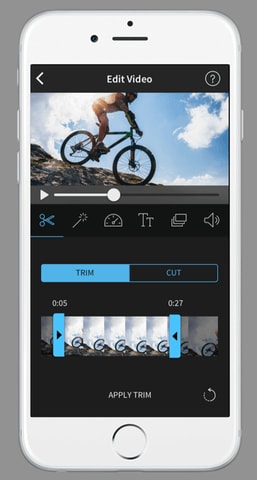
Additional Video Splice Apps for Android
You can’t run out of options when it comes to splicing video. Here are some useful video splice apps for Android at your reach.
• Filmora
Filmora is suitable for mobile phone editing. It is rich in editing features to record, select a theme, apply effects, and easily share your video on other platforms. With this app, you can add animated text, adjust video color and brightness, customize watermarks, and much more. It is, however, slow and often crashes when dealing with larger files. Follow these steps to splice Android.
Step 1. Once successfully downloaded and installed, launch the app on your Android phone and select a built-in template to use.
Step 2. Then go to your Android gallery and choose the videos you wish to splice. Remember, you can add several clips for merging. Remember to load your videos in the order you wish them to appear in the spliced video.
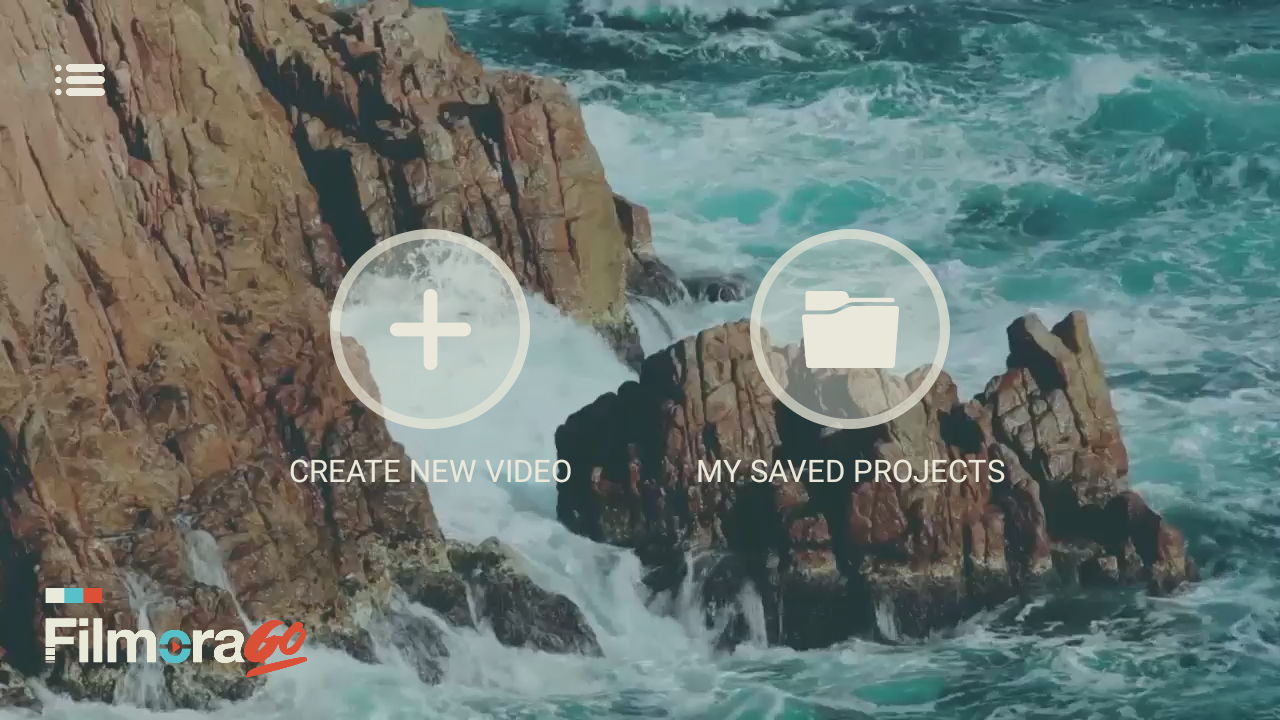
Step 3. Merge the videos and then start to edit your video clips. You can trim, add filters, overlays, music, and much more. It is also important to add some background music to make your video engaging and attractive to your audience.
Step 4. The final step is to click on the “Export” tab to save your spliced video and share it on social media platforms. You can directly share your videos on YouTube, Facebook, and Twitter, among others.
• Vimeo Create
Vimeo supports mobile applications and can be used to splice Android. Sign up for the app on your Android, and launch it. Then follow these steps to merge the video.
Step 1. To begin splicing your video, select the “Start” button, then compose the main interface. Then go to the “Storyboard” and begin to choose the videos you wish to combine.
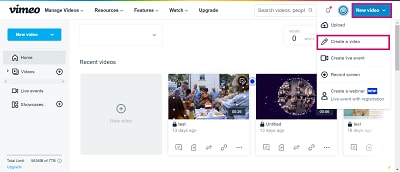
Step 2. Head on over to the “Style” area and choose one to use, then click on the “Next” button.
Step 3. Additionally, you can easily add background music to make it more engaging. Vimeo doesn’t allow you to add music from other sites. However, it brings you a rich catalog from which to choose any kind of music.

Step 4. Preview and export your video. You can see what your video looks like before sharing it. Use the “Preview” feature to check if your video is good enough or needs amendments. Next, select the “Save” option to save and share your video.
Conclusion
● It is worthwhile to produce quality and engaging videos for your audience. One aspect always stands out – combining the best videos for a detailed message. You have learned about the best splice video editor for Android to compose any kind of video. Besides, these apps let you edit your video by adding quality precepts, transitions, and other effects for a professional-looking piece./p>
The ease of use and ready availability push most people to choose Android phones. Likewise, they are compatible with many devices, needing just a simple plug-and-play action. Besides, you can perform various actions with your Android device, like taking photos, capturing videos, and sharing them with friends.
You may also wish to combine your videos and compile a beautiful story. You also need to make your videos stand out and engage your viewers. Well, several apps are available to splice Android and make an interesting single video. Find how to use various apps in this article to splice your videos on Android.

In this article
01 Is Splice available on Android?
02 How to Use Splice for Android Video Editing
03Additional Video Splice Apps for Android
Is Splice available on Android?
Yes! The Android operating system can facilitate the splicing of videos. Even though it may not be available on some older versions by default, you can incorporate and install apps to use for Android splicing. By this, you’ll be able to add various effects to your videos, such as incorporating music, adding text, including titles, and other effects. You can also crop and trim your clip to a desirable play level. Nonetheless, you can use online methods to splice your videos instantly without installing any app.
This article proves that apart from using Splice video editor for Android, you can use other engaging apps to merge your videos. And it doesn’t end there!
Easily share your spliced clips on other platforms. To do this, ensure you set the output format and other settings to suit specific platforms like YouTube, WhatsApp, and Twitter. Check out the steps to follow to splice Android with various apps.
How to Use Splice for Android Video Editing
The Splice Video Editor is a powerful tool that is also easy to use. It suits on-the-go editing action, enabling you to capture and edit your videos without the need to transfer them to a computer. It also brings you various simple editing features like cropping, muting, adding audio, reversing video, merging, blurring, fast and slow motion, among many other effects.
More so, it will effectively convert your video into several output formats like MP3 and GIF. It works pretty fast, and you have a perfect chance to directly share your edited videos on media sites like Facebook, WhatsApp, Instagram, Twitter, and many others.
Step-by-step instructions for using the Splice app on Android to splice videos together
The Splice video editor for Android is at your reach to merge several videos in simple steps. And with the escalating rate of technology usage, Splice has just got you covered. You can use it for free with limited features. Follow these steps to splice the apk.
Step 1: Begin a new project
Ensure you have installed the Splice app for Android on your device. Once launched, go to the app screen and press the “+” button. You can then give your project a name before you continue with some other settings of the project. These include the transition selection, the orientation of the project, border options, etc. Next, click on the “Done” button to confirm your selections.

Step 2: Begin your project
Begin the creation of your project and choose the purpose of your video. Enter the title of your project, then continue to set room for your photos or videos. You can also set the text and zoom options.
Step 3: Insert your videos
Next, add the “+” button to the title’s right side. Likewise, add the video button to enable you to include the videos for splicing. You should notice the album screen opening up. Now, select the videos you wish to add to the project from the album screen. Ensure you put them in the order you want them to appear once sliced. Next, indicate the transition to be applied to your videos and wait for the chosen videos to be uploaded into the project. The Spice app allows you to view your project before exporting it.
Step 4. Edit and export
Most importantly, you should edit your video and make it splendid for your viewers. To do so, click on the “Pencil” button to unleash other editing options. Among the edits you can make include cropping, adjusting speed, trimming, and much more. Likewise, utilize the slider points to edit the start and endpoints of your video. You can also edit the audio and adjust the volumes where necessary.

Additional Video Splice Apps for Android
You can’t run out of options when it comes to splicing video. Here are some useful video splice apps for Android at your reach.
• Filmora
Filmora is suitable for mobile phone editing. It is rich in editing features to record, select a theme, apply effects, and easily share your video on other platforms. With this app, you can add animated text, adjust video color and brightness, customize watermarks, and much more. It is, however, slow and often crashes when dealing with larger files. Follow these steps to splice Android.
Step 1. Once successfully downloaded and installed, launch the app on your Android phone and select a built-in template to use.
Step 2. Then go to your Android gallery and choose the videos you wish to splice. Remember, you can add several clips for merging. Remember to load your videos in the order you wish them to appear in the spliced video.

Step 3. Merge the videos and then start to edit your video clips. You can trim, add filters, overlays, music, and much more. It is also important to add some background music to make your video engaging and attractive to your audience.
Step 4. The final step is to click on the “Export” tab to save your spliced video and share it on social media platforms. You can directly share your videos on YouTube, Facebook, and Twitter, among others.
• Vimeo Create
Vimeo supports mobile applications and can be used to splice Android. Sign up for the app on your Android, and launch it. Then follow these steps to merge the video.
Step 1. To begin splicing your video, select the “Start” button, then compose the main interface. Then go to the “Storyboard” and begin to choose the videos you wish to combine.

Step 2. Head on over to the “Style” area and choose one to use, then click on the “Next” button.
Step 3. Additionally, you can easily add background music to make it more engaging. Vimeo doesn’t allow you to add music from other sites. However, it brings you a rich catalog from which to choose any kind of music.

Step 4. Preview and export your video. You can see what your video looks like before sharing it. Use the “Preview” feature to check if your video is good enough or needs amendments. Next, select the “Save” option to save and share your video.
Conclusion
● It is worthwhile to produce quality and engaging videos for your audience. One aspect always stands out – combining the best videos for a detailed message. You have learned about the best splice video editor for Android to compose any kind of video. Besides, these apps let you edit your video by adding quality precepts, transitions, and other effects for a professional-looking piece./p>
The ease of use and ready availability push most people to choose Android phones. Likewise, they are compatible with many devices, needing just a simple plug-and-play action. Besides, you can perform various actions with your Android device, like taking photos, capturing videos, and sharing them with friends.
You may also wish to combine your videos and compile a beautiful story. You also need to make your videos stand out and engage your viewers. Well, several apps are available to splice Android and make an interesting single video. Find how to use various apps in this article to splice your videos on Android.

In this article
01 Is Splice available on Android?
02 How to Use Splice for Android Video Editing
03Additional Video Splice Apps for Android
Is Splice available on Android?
Yes! The Android operating system can facilitate the splicing of videos. Even though it may not be available on some older versions by default, you can incorporate and install apps to use for Android splicing. By this, you’ll be able to add various effects to your videos, such as incorporating music, adding text, including titles, and other effects. You can also crop and trim your clip to a desirable play level. Nonetheless, you can use online methods to splice your videos instantly without installing any app.
This article proves that apart from using Splice video editor for Android, you can use other engaging apps to merge your videos. And it doesn’t end there!
Easily share your spliced clips on other platforms. To do this, ensure you set the output format and other settings to suit specific platforms like YouTube, WhatsApp, and Twitter. Check out the steps to follow to splice Android with various apps.
How to Use Splice for Android Video Editing
The Splice Video Editor is a powerful tool that is also easy to use. It suits on-the-go editing action, enabling you to capture and edit your videos without the need to transfer them to a computer. It also brings you various simple editing features like cropping, muting, adding audio, reversing video, merging, blurring, fast and slow motion, among many other effects.
More so, it will effectively convert your video into several output formats like MP3 and GIF. It works pretty fast, and you have a perfect chance to directly share your edited videos on media sites like Facebook, WhatsApp, Instagram, Twitter, and many others.
Step-by-step instructions for using the Splice app on Android to splice videos together
The Splice video editor for Android is at your reach to merge several videos in simple steps. And with the escalating rate of technology usage, Splice has just got you covered. You can use it for free with limited features. Follow these steps to splice the apk.
Step 1: Begin a new project
Ensure you have installed the Splice app for Android on your device. Once launched, go to the app screen and press the “+” button. You can then give your project a name before you continue with some other settings of the project. These include the transition selection, the orientation of the project, border options, etc. Next, click on the “Done” button to confirm your selections.

Step 2: Begin your project
Begin the creation of your project and choose the purpose of your video. Enter the title of your project, then continue to set room for your photos or videos. You can also set the text and zoom options.
Step 3: Insert your videos
Next, add the “+” button to the title’s right side. Likewise, add the video button to enable you to include the videos for splicing. You should notice the album screen opening up. Now, select the videos you wish to add to the project from the album screen. Ensure you put them in the order you want them to appear once sliced. Next, indicate the transition to be applied to your videos and wait for the chosen videos to be uploaded into the project. The Spice app allows you to view your project before exporting it.
Step 4. Edit and export
Most importantly, you should edit your video and make it splendid for your viewers. To do so, click on the “Pencil” button to unleash other editing options. Among the edits you can make include cropping, adjusting speed, trimming, and much more. Likewise, utilize the slider points to edit the start and endpoints of your video. You can also edit the audio and adjust the volumes where necessary.

Additional Video Splice Apps for Android
You can’t run out of options when it comes to splicing video. Here are some useful video splice apps for Android at your reach.
• Filmora
Filmora is suitable for mobile phone editing. It is rich in editing features to record, select a theme, apply effects, and easily share your video on other platforms. With this app, you can add animated text, adjust video color and brightness, customize watermarks, and much more. It is, however, slow and often crashes when dealing with larger files. Follow these steps to splice Android.
Step 1. Once successfully downloaded and installed, launch the app on your Android phone and select a built-in template to use.
Step 2. Then go to your Android gallery and choose the videos you wish to splice. Remember, you can add several clips for merging. Remember to load your videos in the order you wish them to appear in the spliced video.

Step 3. Merge the videos and then start to edit your video clips. You can trim, add filters, overlays, music, and much more. It is also important to add some background music to make your video engaging and attractive to your audience.
Step 4. The final step is to click on the “Export” tab to save your spliced video and share it on social media platforms. You can directly share your videos on YouTube, Facebook, and Twitter, among others.
• Vimeo Create
Vimeo supports mobile applications and can be used to splice Android. Sign up for the app on your Android, and launch it. Then follow these steps to merge the video.
Step 1. To begin splicing your video, select the “Start” button, then compose the main interface. Then go to the “Storyboard” and begin to choose the videos you wish to combine.

Step 2. Head on over to the “Style” area and choose one to use, then click on the “Next” button.
Step 3. Additionally, you can easily add background music to make it more engaging. Vimeo doesn’t allow you to add music from other sites. However, it brings you a rich catalog from which to choose any kind of music.

Step 4. Preview and export your video. You can see what your video looks like before sharing it. Use the “Preview” feature to check if your video is good enough or needs amendments. Next, select the “Save” option to save and share your video.
Conclusion
● It is worthwhile to produce quality and engaging videos for your audience. One aspect always stands out – combining the best videos for a detailed message. You have learned about the best splice video editor for Android to compose any kind of video. Besides, these apps let you edit your video by adding quality precepts, transitions, and other effects for a professional-looking piece./p>
The ease of use and ready availability push most people to choose Android phones. Likewise, they are compatible with many devices, needing just a simple plug-and-play action. Besides, you can perform various actions with your Android device, like taking photos, capturing videos, and sharing them with friends.
You may also wish to combine your videos and compile a beautiful story. You also need to make your videos stand out and engage your viewers. Well, several apps are available to splice Android and make an interesting single video. Find how to use various apps in this article to splice your videos on Android.

In this article
01 Is Splice available on Android?
02 How to Use Splice for Android Video Editing
03Additional Video Splice Apps for Android
Is Splice available on Android?
Yes! The Android operating system can facilitate the splicing of videos. Even though it may not be available on some older versions by default, you can incorporate and install apps to use for Android splicing. By this, you’ll be able to add various effects to your videos, such as incorporating music, adding text, including titles, and other effects. You can also crop and trim your clip to a desirable play level. Nonetheless, you can use online methods to splice your videos instantly without installing any app.
This article proves that apart from using Splice video editor for Android, you can use other engaging apps to merge your videos. And it doesn’t end there!
Easily share your spliced clips on other platforms. To do this, ensure you set the output format and other settings to suit specific platforms like YouTube, WhatsApp, and Twitter. Check out the steps to follow to splice Android with various apps.
How to Use Splice for Android Video Editing
The Splice Video Editor is a powerful tool that is also easy to use. It suits on-the-go editing action, enabling you to capture and edit your videos without the need to transfer them to a computer. It also brings you various simple editing features like cropping, muting, adding audio, reversing video, merging, blurring, fast and slow motion, among many other effects.
More so, it will effectively convert your video into several output formats like MP3 and GIF. It works pretty fast, and you have a perfect chance to directly share your edited videos on media sites like Facebook, WhatsApp, Instagram, Twitter, and many others.
Step-by-step instructions for using the Splice app on Android to splice videos together
The Splice video editor for Android is at your reach to merge several videos in simple steps. And with the escalating rate of technology usage, Splice has just got you covered. You can use it for free with limited features. Follow these steps to splice the apk.
Step 1: Begin a new project
Ensure you have installed the Splice app for Android on your device. Once launched, go to the app screen and press the “+” button. You can then give your project a name before you continue with some other settings of the project. These include the transition selection, the orientation of the project, border options, etc. Next, click on the “Done” button to confirm your selections.

Step 2: Begin your project
Begin the creation of your project and choose the purpose of your video. Enter the title of your project, then continue to set room for your photos or videos. You can also set the text and zoom options.
Step 3: Insert your videos
Next, add the “+” button to the title’s right side. Likewise, add the video button to enable you to include the videos for splicing. You should notice the album screen opening up. Now, select the videos you wish to add to the project from the album screen. Ensure you put them in the order you want them to appear once sliced. Next, indicate the transition to be applied to your videos and wait for the chosen videos to be uploaded into the project. The Spice app allows you to view your project before exporting it.
Step 4. Edit and export
Most importantly, you should edit your video and make it splendid for your viewers. To do so, click on the “Pencil” button to unleash other editing options. Among the edits you can make include cropping, adjusting speed, trimming, and much more. Likewise, utilize the slider points to edit the start and endpoints of your video. You can also edit the audio and adjust the volumes where necessary.

Additional Video Splice Apps for Android
You can’t run out of options when it comes to splicing video. Here are some useful video splice apps for Android at your reach.
• Filmora
Filmora is suitable for mobile phone editing. It is rich in editing features to record, select a theme, apply effects, and easily share your video on other platforms. With this app, you can add animated text, adjust video color and brightness, customize watermarks, and much more. It is, however, slow and often crashes when dealing with larger files. Follow these steps to splice Android.
Step 1. Once successfully downloaded and installed, launch the app on your Android phone and select a built-in template to use.
Step 2. Then go to your Android gallery and choose the videos you wish to splice. Remember, you can add several clips for merging. Remember to load your videos in the order you wish them to appear in the spliced video.

Step 3. Merge the videos and then start to edit your video clips. You can trim, add filters, overlays, music, and much more. It is also important to add some background music to make your video engaging and attractive to your audience.
Step 4. The final step is to click on the “Export” tab to save your spliced video and share it on social media platforms. You can directly share your videos on YouTube, Facebook, and Twitter, among others.
• Vimeo Create
Vimeo supports mobile applications and can be used to splice Android. Sign up for the app on your Android, and launch it. Then follow these steps to merge the video.
Step 1. To begin splicing your video, select the “Start” button, then compose the main interface. Then go to the “Storyboard” and begin to choose the videos you wish to combine.

Step 2. Head on over to the “Style” area and choose one to use, then click on the “Next” button.
Step 3. Additionally, you can easily add background music to make it more engaging. Vimeo doesn’t allow you to add music from other sites. However, it brings you a rich catalog from which to choose any kind of music.

Step 4. Preview and export your video. You can see what your video looks like before sharing it. Use the “Preview” feature to check if your video is good enough or needs amendments. Next, select the “Save” option to save and share your video.
Conclusion
● It is worthwhile to produce quality and engaging videos for your audience. One aspect always stands out – combining the best videos for a detailed message. You have learned about the best splice video editor for Android to compose any kind of video. Besides, these apps let you edit your video by adding quality precepts, transitions, and other effects for a professional-looking piece./p>
Add Background to Video With/Without a Green Screen
Versatile Video Editor - Wondershare Filmora
An easy yet powerful editor
Numerous effects to choose from
Detailed tutorials provided by the official channel
Video’s background is the most crucial part of video editing. When filming, the backgrounds cannot be more attractive with the natural background, so editors use background effects to change the background of the video and make it more appealing. Wondershare Filmora is a fantastic software to add background to a video without a green screen. The good news is that Filmora offers various tools to remove background from a video, add a background, add transition effects, and all these by using virtual reality to complete the task. It has several effects and themes and has tools to remove background effectively. Many editors are available in the market for background effects but with limitations. Filmora offers an effective way to add background without a green screen and with a green screen. You will also be able to add a background to the green screen photo online.
Let us discuss the finest tools available in Filmora to change the background easily and quickly. This article will concentrate on two methods to edit background.
● How to put a background on a video without a green screen.
● How to add background to video with green screen.
If you wonder how to add a background to a green screen in after effects, it involves a very long step and quality footage to remove the background.
In this article
01 [Add background to green screen video](#Part 1)
02 [Add background to video without a green screen.](#Part 2)
Part 1 Add background to green screen video
The green screen effect is the advanced feature in overlays. It makes the background of the clips transparent. If you want to add background to green screen video online, there are many websites available but always with some limitations in resolutions and quality while exporting the video. Filmora is a useful tool in video editing to create animatic and superimpose backgrounds like any jet craft or a bird flying. You can easily make these changes to the video using Filmora by using a green screen footage clip or a plain green screen in the background while creating the footage. We will focus on putting a background on a green screen in this part.
Let us discuss how to add background to green screen are pretty simple using Filmora.
Step1 Add Overlay clip to timeline
Select “Create New Project” to start the editing. At first, you have to choose both the overlay clip and background clip and add them to the timeline. You can either import from the library or drag the files to the timeline in the positions shown in the picture.
You can edit the overlay clip individually by adding animation, effects, filterers, mask frame, and blending modes (multiply, darken, or color burn). Let us move to the next step, how to put the background on the green screen.
Step2 Make a Green Screen
Let’s get into the first step to add background to the green screen video. In this part, you will be using a green screen to remove the background. So, import the green screen clips to the media library. Now, add the background green screen to the timeline above the video track as shown in the picture.

● Move the cursor to the green screen on the timeline and double-click on it.
● The settings box will appear on the left.
● You have to tick the Chroma key there.
The green screen effects will be applied automatically.
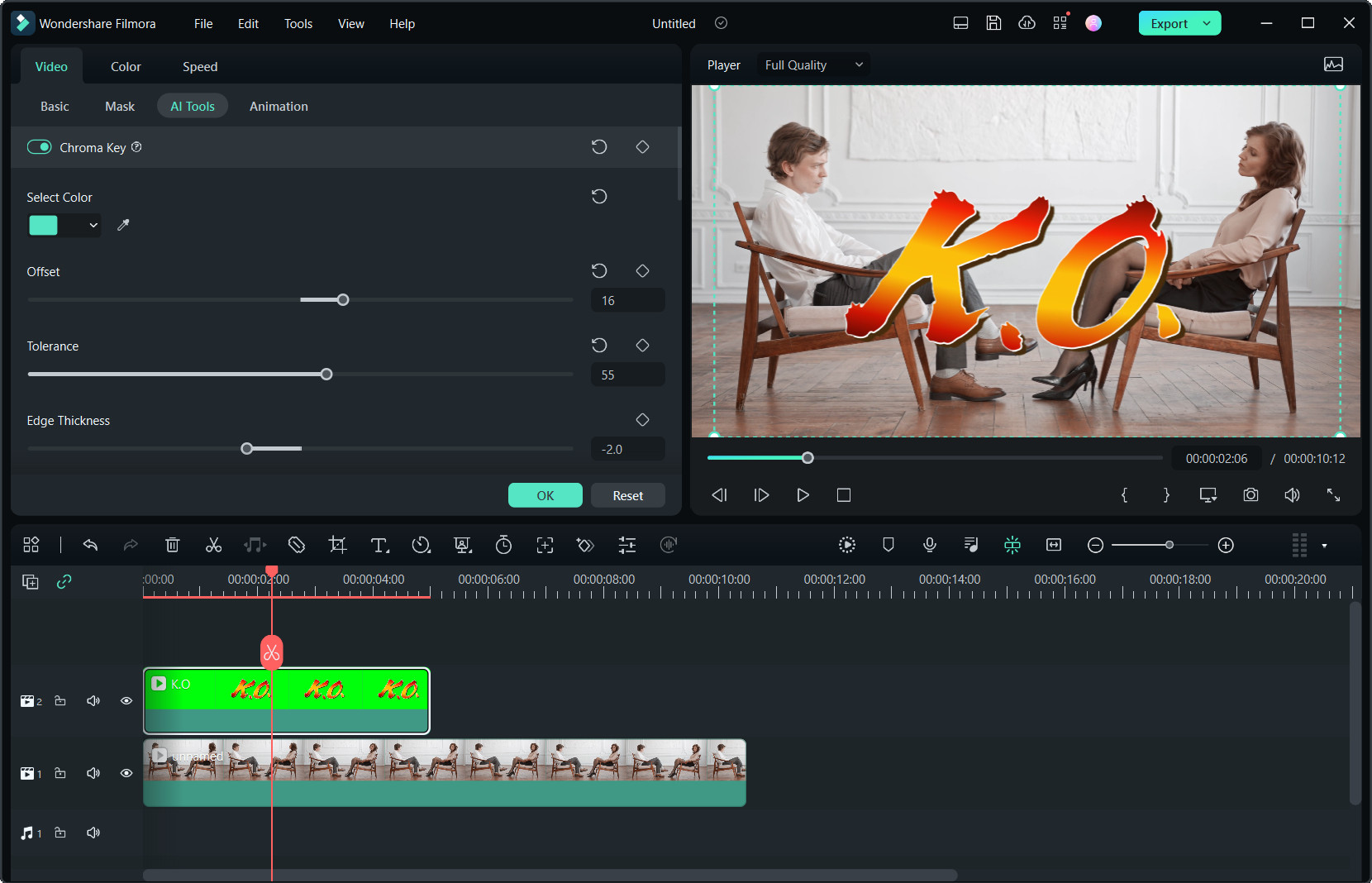
The video can be refined with many additional tools like Tolerance, Offset, and Alpha channel to make the video background clear. Once satisfied with the results, click on OK. Now that we have discussed how to add background to green screen video with the help of Filmora let’s now discuss how to add a background to a video without a green screen.
Part 2 Add background to video without a green screen
Let us learn how to add a background to a video without a green screen. In Filmora, there is a special effect called the Human segmentation effect to isolate people from the backgrounds without a green screen. All it takes is a few clicks. Once you remove the surround, you can add an image or a video clip to go well with your original video. Another unique feature is that after removing the background from the video clip, you can add it to the overlay of another video clip. It works well when it has a natural and single person in front of the camera.
Let’s discuss how to add background without a green screen.
Wondershare Filmora
Get started easily with Filmora’s powerful performance, intuitive interface, and countless effects!
Try It Free Try It Free Try It Free Learn More about Filmora>

Step1 Import Media to Timeline
Import the video clip from the device. You can also drag the video clip from the timeline. You can use other effects from Filmora to make necessary changes like editing, cutting, trimming, filter and transition.
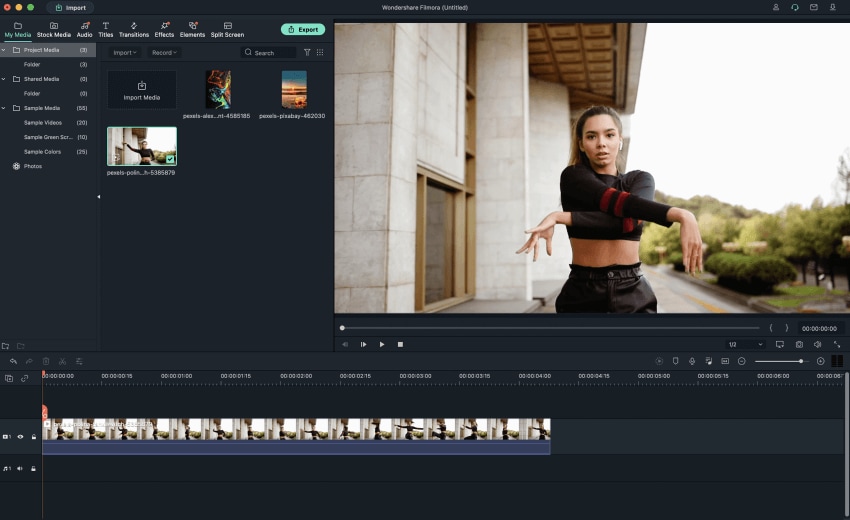
Step2 Adding Human Segmentation Effect
To see the options to add background to video without a green screen, go to Effects – AI Portrait, and you can see a list of all AI portrait effects here. You can see the human segmentation effect, drag and place it on the top of your video clip in the timeline.

Step3 Preview and Adjust
After the human segmentation effect, the people will be isolated separately from the background, shown in the picture. Double click on the effects in the timeline where you can edit, adjust, thickness, feather, and preview.

Step4 Replace and change video background
If you wish to change the background, import an image or video below your main track. Now, that is how to add a background without a green screen.
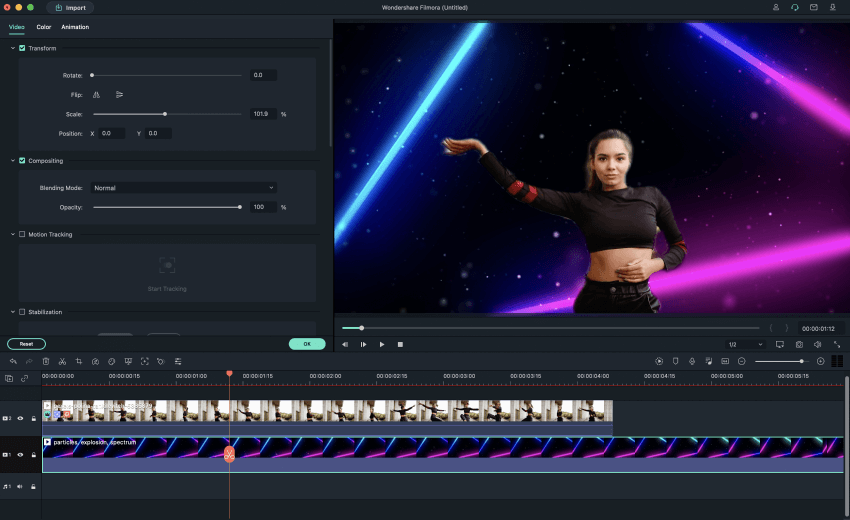
Thus, you learned to create your green screen backgrounds and add a background to a green screen video using the favorite video effect software, Filmora.
Conclusion
Thus, in this guide, you learned how to add a background to a video without a green screen, and we hope this will be useful. You can find multiple software online for adding a background to a green screen with additional background effects. However, the Human segmentation available in Filmora is the easiest way to change scenes and clone people. With support to over 100 video tracks, Filmora is by far the best tool that allows you to change the setting with and without a green screen.
Video’s background is the most crucial part of video editing. When filming, the backgrounds cannot be more attractive with the natural background, so editors use background effects to change the background of the video and make it more appealing. Wondershare Filmora is a fantastic software to add background to a video without a green screen. The good news is that Filmora offers various tools to remove background from a video, add a background, add transition effects, and all these by using virtual reality to complete the task. It has several effects and themes and has tools to remove background effectively. Many editors are available in the market for background effects but with limitations. Filmora offers an effective way to add background without a green screen and with a green screen. You will also be able to add a background to the green screen photo online.
Let us discuss the finest tools available in Filmora to change the background easily and quickly. This article will concentrate on two methods to edit background.
● How to put a background on a video without a green screen.
● How to add background to video with green screen.
If you wonder how to add a background to a green screen in after effects, it involves a very long step and quality footage to remove the background.
In this article
01 [Add background to green screen video](#Part 1)
02 [Add background to video without a green screen.](#Part 2)
Part 1 Add background to green screen video
The green screen effect is the advanced feature in overlays. It makes the background of the clips transparent. If you want to add background to green screen video online, there are many websites available but always with some limitations in resolutions and quality while exporting the video. Filmora is a useful tool in video editing to create animatic and superimpose backgrounds like any jet craft or a bird flying. You can easily make these changes to the video using Filmora by using a green screen footage clip or a plain green screen in the background while creating the footage. We will focus on putting a background on a green screen in this part.
Let us discuss how to add background to green screen are pretty simple using Filmora.
Step1 Add Overlay clip to timeline
Select “Create New Project” to start the editing. At first, you have to choose both the overlay clip and background clip and add them to the timeline. You can either import from the library or drag the files to the timeline in the positions shown in the picture.
You can edit the overlay clip individually by adding animation, effects, filterers, mask frame, and blending modes (multiply, darken, or color burn). Let us move to the next step, how to put the background on the green screen.
Step2 Make a Green Screen
Let’s get into the first step to add background to the green screen video. In this part, you will be using a green screen to remove the background. So, import the green screen clips to the media library. Now, add the background green screen to the timeline above the video track as shown in the picture.

● Move the cursor to the green screen on the timeline and double-click on it.
● The settings box will appear on the left.
● You have to tick the Chroma key there.
The green screen effects will be applied automatically.

The video can be refined with many additional tools like Tolerance, Offset, and Alpha channel to make the video background clear. Once satisfied with the results, click on OK. Now that we have discussed how to add background to green screen video with the help of Filmora let’s now discuss how to add a background to a video without a green screen.
Part 2 Add background to video without a green screen
Let us learn how to add a background to a video without a green screen. In Filmora, there is a special effect called the Human segmentation effect to isolate people from the backgrounds without a green screen. All it takes is a few clicks. Once you remove the surround, you can add an image or a video clip to go well with your original video. Another unique feature is that after removing the background from the video clip, you can add it to the overlay of another video clip. It works well when it has a natural and single person in front of the camera.
Let’s discuss how to add background without a green screen.
Wondershare Filmora
Get started easily with Filmora’s powerful performance, intuitive interface, and countless effects!
Try It Free Try It Free Try It Free Learn More about Filmora>

Step1 Import Media to Timeline
Import the video clip from the device. You can also drag the video clip from the timeline. You can use other effects from Filmora to make necessary changes like editing, cutting, trimming, filter and transition.

Step2 Adding Human Segmentation Effect
To see the options to add background to video without a green screen, go to Effects – AI Portrait, and you can see a list of all AI portrait effects here. You can see the human segmentation effect, drag and place it on the top of your video clip in the timeline.

Step3 Preview and Adjust
After the human segmentation effect, the people will be isolated separately from the background, shown in the picture. Double click on the effects in the timeline where you can edit, adjust, thickness, feather, and preview.

Step4 Replace and change video background
If you wish to change the background, import an image or video below your main track. Now, that is how to add a background without a green screen.

Thus, you learned to create your green screen backgrounds and add a background to a green screen video using the favorite video effect software, Filmora.
Conclusion
Thus, in this guide, you learned how to add a background to a video without a green screen, and we hope this will be useful. You can find multiple software online for adding a background to a green screen with additional background effects. However, the Human segmentation available in Filmora is the easiest way to change scenes and clone people. With support to over 100 video tracks, Filmora is by far the best tool that allows you to change the setting with and without a green screen.
Video’s background is the most crucial part of video editing. When filming, the backgrounds cannot be more attractive with the natural background, so editors use background effects to change the background of the video and make it more appealing. Wondershare Filmora is a fantastic software to add background to a video without a green screen. The good news is that Filmora offers various tools to remove background from a video, add a background, add transition effects, and all these by using virtual reality to complete the task. It has several effects and themes and has tools to remove background effectively. Many editors are available in the market for background effects but with limitations. Filmora offers an effective way to add background without a green screen and with a green screen. You will also be able to add a background to the green screen photo online.
Let us discuss the finest tools available in Filmora to change the background easily and quickly. This article will concentrate on two methods to edit background.
● How to put a background on a video without a green screen.
● How to add background to video with green screen.
If you wonder how to add a background to a green screen in after effects, it involves a very long step and quality footage to remove the background.
In this article
01 [Add background to green screen video](#Part 1)
02 [Add background to video without a green screen.](#Part 2)
Part 1 Add background to green screen video
The green screen effect is the advanced feature in overlays. It makes the background of the clips transparent. If you want to add background to green screen video online, there are many websites available but always with some limitations in resolutions and quality while exporting the video. Filmora is a useful tool in video editing to create animatic and superimpose backgrounds like any jet craft or a bird flying. You can easily make these changes to the video using Filmora by using a green screen footage clip or a plain green screen in the background while creating the footage. We will focus on putting a background on a green screen in this part.
Let us discuss how to add background to green screen are pretty simple using Filmora.
Step1 Add Overlay clip to timeline
Select “Create New Project” to start the editing. At first, you have to choose both the overlay clip and background clip and add them to the timeline. You can either import from the library or drag the files to the timeline in the positions shown in the picture.
You can edit the overlay clip individually by adding animation, effects, filterers, mask frame, and blending modes (multiply, darken, or color burn). Let us move to the next step, how to put the background on the green screen.
Step2 Make a Green Screen
Let’s get into the first step to add background to the green screen video. In this part, you will be using a green screen to remove the background. So, import the green screen clips to the media library. Now, add the background green screen to the timeline above the video track as shown in the picture.

● Move the cursor to the green screen on the timeline and double-click on it.
● The settings box will appear on the left.
● You have to tick the Chroma key there.
The green screen effects will be applied automatically.

The video can be refined with many additional tools like Tolerance, Offset, and Alpha channel to make the video background clear. Once satisfied with the results, click on OK. Now that we have discussed how to add background to green screen video with the help of Filmora let’s now discuss how to add a background to a video without a green screen.
Part 2 Add background to video without a green screen
Let us learn how to add a background to a video without a green screen. In Filmora, there is a special effect called the Human segmentation effect to isolate people from the backgrounds without a green screen. All it takes is a few clicks. Once you remove the surround, you can add an image or a video clip to go well with your original video. Another unique feature is that after removing the background from the video clip, you can add it to the overlay of another video clip. It works well when it has a natural and single person in front of the camera.
Let’s discuss how to add background without a green screen.
Wondershare Filmora
Get started easily with Filmora’s powerful performance, intuitive interface, and countless effects!
Try It Free Try It Free Try It Free Learn More about Filmora>

Step1 Import Media to Timeline
Import the video clip from the device. You can also drag the video clip from the timeline. You can use other effects from Filmora to make necessary changes like editing, cutting, trimming, filter and transition.

Step2 Adding Human Segmentation Effect
To see the options to add background to video without a green screen, go to Effects – AI Portrait, and you can see a list of all AI portrait effects here. You can see the human segmentation effect, drag and place it on the top of your video clip in the timeline.

Step3 Preview and Adjust
After the human segmentation effect, the people will be isolated separately from the background, shown in the picture. Double click on the effects in the timeline where you can edit, adjust, thickness, feather, and preview.

Step4 Replace and change video background
If you wish to change the background, import an image or video below your main track. Now, that is how to add a background without a green screen.

Thus, you learned to create your green screen backgrounds and add a background to a green screen video using the favorite video effect software, Filmora.
Conclusion
Thus, in this guide, you learned how to add a background to a video without a green screen, and we hope this will be useful. You can find multiple software online for adding a background to a green screen with additional background effects. However, the Human segmentation available in Filmora is the easiest way to change scenes and clone people. With support to over 100 video tracks, Filmora is by far the best tool that allows you to change the setting with and without a green screen.
Video’s background is the most crucial part of video editing. When filming, the backgrounds cannot be more attractive with the natural background, so editors use background effects to change the background of the video and make it more appealing. Wondershare Filmora is a fantastic software to add background to a video without a green screen. The good news is that Filmora offers various tools to remove background from a video, add a background, add transition effects, and all these by using virtual reality to complete the task. It has several effects and themes and has tools to remove background effectively. Many editors are available in the market for background effects but with limitations. Filmora offers an effective way to add background without a green screen and with a green screen. You will also be able to add a background to the green screen photo online.
Let us discuss the finest tools available in Filmora to change the background easily and quickly. This article will concentrate on two methods to edit background.
● How to put a background on a video without a green screen.
● How to add background to video with green screen.
If you wonder how to add a background to a green screen in after effects, it involves a very long step and quality footage to remove the background.
In this article
01 [Add background to green screen video](#Part 1)
02 [Add background to video without a green screen.](#Part 2)
Part 1 Add background to green screen video
The green screen effect is the advanced feature in overlays. It makes the background of the clips transparent. If you want to add background to green screen video online, there are many websites available but always with some limitations in resolutions and quality while exporting the video. Filmora is a useful tool in video editing to create animatic and superimpose backgrounds like any jet craft or a bird flying. You can easily make these changes to the video using Filmora by using a green screen footage clip or a plain green screen in the background while creating the footage. We will focus on putting a background on a green screen in this part.
Let us discuss how to add background to green screen are pretty simple using Filmora.
Step1 Add Overlay clip to timeline
Select “Create New Project” to start the editing. At first, you have to choose both the overlay clip and background clip and add them to the timeline. You can either import from the library or drag the files to the timeline in the positions shown in the picture.
You can edit the overlay clip individually by adding animation, effects, filterers, mask frame, and blending modes (multiply, darken, or color burn). Let us move to the next step, how to put the background on the green screen.
Step2 Make a Green Screen
Let’s get into the first step to add background to the green screen video. In this part, you will be using a green screen to remove the background. So, import the green screen clips to the media library. Now, add the background green screen to the timeline above the video track as shown in the picture.

● Move the cursor to the green screen on the timeline and double-click on it.
● The settings box will appear on the left.
● You have to tick the Chroma key there.
The green screen effects will be applied automatically.

The video can be refined with many additional tools like Tolerance, Offset, and Alpha channel to make the video background clear. Once satisfied with the results, click on OK. Now that we have discussed how to add background to green screen video with the help of Filmora let’s now discuss how to add a background to a video without a green screen.
Part 2 Add background to video without a green screen
Let us learn how to add a background to a video without a green screen. In Filmora, there is a special effect called the Human segmentation effect to isolate people from the backgrounds without a green screen. All it takes is a few clicks. Once you remove the surround, you can add an image or a video clip to go well with your original video. Another unique feature is that after removing the background from the video clip, you can add it to the overlay of another video clip. It works well when it has a natural and single person in front of the camera.
Let’s discuss how to add background without a green screen.
Wondershare Filmora
Get started easily with Filmora’s powerful performance, intuitive interface, and countless effects!
Try It Free Try It Free Try It Free Learn More about Filmora>

Step1 Import Media to Timeline
Import the video clip from the device. You can also drag the video clip from the timeline. You can use other effects from Filmora to make necessary changes like editing, cutting, trimming, filter and transition.

Step2 Adding Human Segmentation Effect
To see the options to add background to video without a green screen, go to Effects – AI Portrait, and you can see a list of all AI portrait effects here. You can see the human segmentation effect, drag and place it on the top of your video clip in the timeline.

Step3 Preview and Adjust
After the human segmentation effect, the people will be isolated separately from the background, shown in the picture. Double click on the effects in the timeline where you can edit, adjust, thickness, feather, and preview.

Step4 Replace and change video background
If you wish to change the background, import an image or video below your main track. Now, that is how to add a background without a green screen.

Thus, you learned to create your green screen backgrounds and add a background to a green screen video using the favorite video effect software, Filmora.
Conclusion
Thus, in this guide, you learned how to add a background to a video without a green screen, and we hope this will be useful. You can find multiple software online for adding a background to a green screen with additional background effects. However, the Human segmentation available in Filmora is the easiest way to change scenes and clone people. With support to over 100 video tracks, Filmora is by far the best tool that allows you to change the setting with and without a green screen.
Also read:
- New Ways to Learn Discord Game Bots – Even if Youre Just Starting Out
- Updated Top 12 Sony Vegas Slideshow Templates for Free Download
- Blender Is an Open-Source Cross-Platform 3D Graphics Program, but This Doesnt Mean Its a Low-Rent Option
- Updated 2024 Approved Guide To Using Luts Perfectly in Final Cut Pro
- New Want to Learn How to Trim Videos in Premiere Pro. Read on; Our Guide Will Help You Trim Videos with This Timeline-Based Video Editing Software Application to Make Them Engaging to Viewers
- 2024 Approved Step by Step to Rotate Videos Using Handbrake
- Wondering How to Rotate a Video in Windows at Any Desired Angle and Save It Permanently? Find Out All the Different Ways to Rotate Videos Temporarily as Well as Permanently for 2024
- Top 5 Websites and Software to Convert Powerpoint to Mp4
- In 2024, Complete Guide to Converting GIF to SVG With Ease
- New In 2024, 3D Ray Traced Settings In After Effects A Comprehensive Guide
- Updated 11 Apps To Speed Up A Video On iPhone
- New There Are Several Video Players that You Can Use to Watch Videos on Your PC. To Have a Better Experience Viewing Videos and Enhancing Them Across a Similar Platform, You Can Try Out VLC Media Player for PC
- In 2024, Best Cloud Storage Service for Videos
- Updated What Is AI Composite Video App and AI Composite Video Tutorial
- New Top 8 Video Editor with Useful Masking
- In 2024, Easy Way to Combine Several Xvid Files Into One Windows, Mac,Android
- Searching for the Best Video Editor to Make Your Video More Attractive? This Article Introduce You Everything About Choosing a Video Editing Software
- Updated In 2024, 15 Must-Use Gifs Editors
- Updated In 2024, Finding Best GIF Websites Is Easy as Pie — Heres What You Should Know
- Updated In 2024, Splice App for Android - Guide to Download & Use
- 2024 Approved Now, You Can Also Apply the Stranger Things Upside Down Effect to Your Video! This Effect Combines Camera Tricks and Video Editing Within Filmora to Transition From the Normal World Into the Upside Down
- 2024 Approved Make A Countdown Video
- 2024 Approved How to Add Subtitles in VLC Media Play
- 2024 Approved Difference Between Time Lapse and Hyperlapse
- 3 Best Tools to Hard Reset HTC U23 Pro | Dr.fone
- In 2024, Trouble with Apple iPhone 13 mini Swipe-Up? Try These 11 Solutions | Dr.fone
- How to Stop Google Chrome from Tracking Your Location On Samsung Galaxy S24+? | Dr.fone
- The Best iSpoofer Alternative to Try On Apple iPhone 13 Pro Max | Dr.fone
- How do I reset my Honor Magic5 Ultimate Phone without technical knowledge? | Dr.fone
- V27 Music Recovery - Recover Deleted Music from V27
- How to fix Microsoft Excel 2013 has stopped working error?
- Best Infinix Smart 8 Pattern Lock Removal Tools Remove Android Pattern Lock Without Losing Data
- In 2024, How To Remove Screen Lock PIN On Realme C51 Like A Pro 5 Easy Ways
- How to Reset a Realme 12 Pro 5G Phone That Is Locked | Dr.fone
- Ways To Find Unlocking Codes For Vivo Y27s Phones
- Stuck at Android System Recovery Of Honor X8b ? Fix It Easily | Dr.fone
- In 2024, All You Need To Know About Mega Greninja For Honor 70 Lite 5G | Dr.fone
- In 2024, Pokémon Go Cooldown Chart On Poco F5 Pro 5G | Dr.fone
- How Can I Use a Fake GPS Without Mock Location On Samsung Galaxy M34? | Dr.fone
- In 2024, Forgot Pattern Lock? Heres How You Can Unlock Motorola G24 Power Pattern Lock Screen
- In 2024, 5 Best Adobe Animate Courses & Classes
- How to Soft Reset Samsung Galaxy F14 5G phone? | Dr.fone
- In 2024, How To Transfer Messages From Apple iPhone 15 Pro to other iPhone All iOS Versions | Dr.fone
- Recover iPhone 6s Data From iOS iTunes Backup | Dr.fone
- How to Transfer Photos From Motorola Razr 40 Ultra to Samsung Galaxy S21 Ultra | Dr.fone
- Title: How to Create After Effects Gifs
- Author: Chloe
- Created at : 2024-05-20 03:37:22
- Updated at : 2024-05-21 03:37:22
- Link: https://ai-editing-video.techidaily.com/how-to-create-after-effects-gifs/
- License: This work is licensed under CC BY-NC-SA 4.0.

